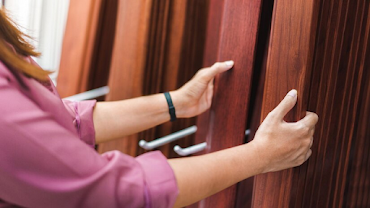Hospital Entrance Doors: Balancing Function and Aesthetics
- Get link
- X
- Other Apps
The entrance to a hospital is more than just a point of access; it sets the tone for the entire patient experience. As the first point of contact, the hospital entrance doors play a crucial role in shaping the perceptions and expectations of those seeking medical care. Balancing functionality and aesthetics is essential in creating an environment that is both welcoming and efficient.
Functionality: Prioritizing Access and Safety
When it comes to hospital entrance doors, functionality is of utmost importance. These doors must accommodate the diverse needs of patients, visitors, and medical personnel, ensuring seamless and safe access to the facility. Factors such as ease of use, compliance with ADA (Americans with Disabilities Act) regulations, and emergency preparedness must be carefully considered.
Automated Doors: Enhancing Accessibility
One of the primary functional requirements for hospital entrance doors is the ability to accommodate individuals with mobility challenges. Automated doors, equipped with sensors and motion-activated mechanisms, provide a convenient and accessible solution. These doors open and close automatically, eliminating the need for manual interaction and allowing for a smooth and dignified entry experience for all.
Emergency Preparedness: Prioritizing Safety
In the event of an emergency, hospital entrance doors must be designed to facilitate a rapid and orderly evacuation. This may include the incorporation of emergency exit hardware, such as panic bars or push-to-exit buttons, which allow for quick and intuitive access during times of crisis. Additionally, the doors should be constructed with materials that can withstand the rigors of emergency situations, ensuring the safety and security of all occupants.
Aesthetic Considerations: Creating a Welcoming Environment
While functionality is paramount, the aesthetic qualities of hospital entrance doors also play a significant role in shaping the overall patient experience. The design, materials, and visual appeal of these doors can contribute to the creation of a welcoming and calming environment, which can have a profound impact on the emotional well-being of patients and visitors.
Architectural Integration: Harmonizing with the Building Design
Hospital entrance doors should seamlessly integrate with the overall architectural design of the facility. Whether the building features a modern, contemporary aesthetic or a more traditional, historical style, the entrance doors should complement the existing visual elements, creating a cohesive and visually appealing impression.
Material Selection: Balancing Durability and Aesthetics
The choice of materials for hospital entrance doors is a crucial consideration, as these doors must withstand heavy foot traffic, inclement weather, and the demands of a high-traffic medical environment. Durable materials, such as aluminum, stainless steel, or tempered glass, can provide the necessary strength and resilience while also offering a range of aesthetic options.
Customization and Branding: Enhancing the Hospital's Identity
In addition to functional and aesthetic considerations, hospital entrance doors can also serve as a platform for branding and visual identity. Customized designs, featuring the hospital's logo, colors, or other distinctive elements, can help to reinforce the institution's brand and create a memorable first impression for visitors.
Maintenance and Longevity: Ensuring Long-Term Performance
To maintain the optimal performance and appearance of hospital entrance doors, it is essential to implement a comprehensive maintenance program. Regular cleaning, inspection, and necessary repairs can help to ensure the doors continue to function efficiently and maintain their aesthetic appeal over time.
Conclusion
Hospital entrance doors are more than just a point of entry; they are a critical component in shaping the overall patient experience. By striking a balance between functionality and aesthetics, these doors can contribute to the creation of a welcoming, accessible, and safe environment for all who seek medical care. Through thoughtful design, material selection, and ongoing maintenance, hospital administrators can ensure that their entrance doors serve as a reflection of the institution's commitment to excellence and the well-being of its patients.
- Get link
- X
- Other Apps




Comments
Post a Comment